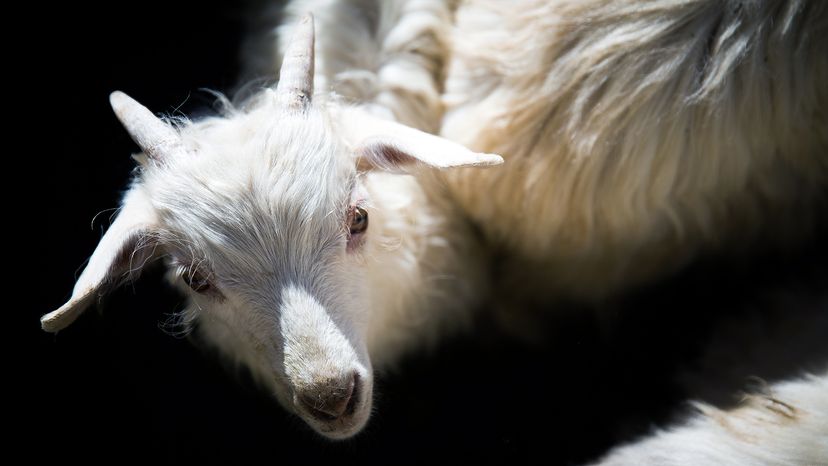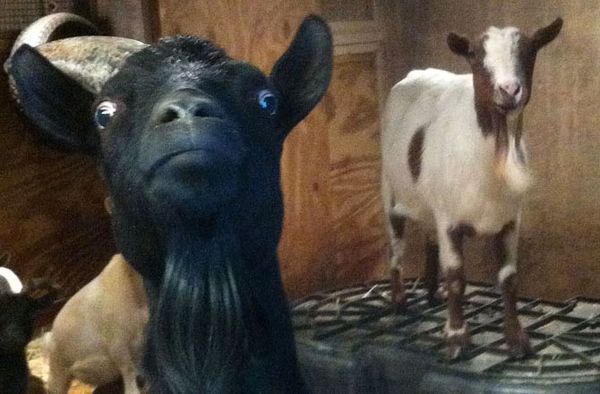
Ask Wendy Pieh, a goat farmer in Bremen, Maine, to name what she likes most about her work, and she'll tell you it's the individual personalities of the goats for which she cares. "Think of the word 'capricious,'" she says. "That comes from the word 'caprine,' which is Latin for 'goat.' They're like that. They'll jump and dance ... and they'll climb on anything. They're affectionate."
Pieh's particular type of goats — 40 to 80 of them, depending on the year — are also some of the providers of a valuable product for humans: cashmere. Yes, in case you didn't know, your favorite, softest (and probably most expensive) sweater comes from the fur of the cashmere goat. And once you know what's involved in making a cashmere sweater, the price might not seem so exorbitant.
Advertisement
Goats are one of at least 11 wool-producing animals. The list also includes sheep, rabbits and llama. There are several varieties of cashmere goats, and a number of farms, factories, and conglomerates around the world using various production methods to make cashmere. The first goats purported to be used by humans to keep warm are said to be the Pashmina goats. They're found in the super-high-altitude regions of western and northern Tibet. The goats' soft and dense underfur is built to withstand extreme temperatures as low as minus 40 degrees Fahrenheit (minus 40 degrees Celsius).
The wool from these bucks and nannies — favored by British royalty — eventually came to be processed in Kashmir in northern India; hence the name.
Various bloodlines of cashmere goats have, with human help, spread around the world. Australia has a particular breed that provides luxuriously soft threads. North American cashmere goats are found in the colder regions of the U.S. and Canada.
Advertisement

